James R. Callan's Blog, page 8
February 23, 2018
When is a Lie Not a Lie?
Today, Donna Schlachter talks about pseudonyms – and then about  her new book. Donna lives in Denver. She writes historical suspense under her own name and contemporary suspense under her alter ego of Leeann Betts. In addition, she ghostwrites, edits fiction and non-fiction, but manages time for travel, which helps her writing.
her new book. Donna lives in Denver. She writes historical suspense under her own name and contemporary suspense under her alter ego of Leeann Betts. In addition, she ghostwrites, edits fiction and non-fiction, but manages time for travel, which helps her writing.
“Writing under a pseudonym is a lie and Christians shouldn’t do it.”
This was a comment left on a recent online discussion group I participated in, and it gave me pause for thought.
As a relatively mature Christian, I know the difference between telling the truth and telling a lie. I know the difference between using tact to save somebody’s feelings, or conveying age-appropriate information to children, or avoiding spoiling a surprise by telling too much.
And I know when I’m not using any of those good reasons to alter the absolute truth because what I’m saying either makes me look better or makes another look worse. So if I’m trying to avoid blame, or shift responsibility, or lift myself up by dragging someone else down, that’s a lie.
So what about a pseudonym? If I write a book and put somebody else’s name on it, is that a lie?
I think it goes back again to the motive. If I’m writing under another name because I’m a bad writer with some really bad books out there, and I want to trick people into buying more of my books by simply changing the author’s name, that’s wrong.
But if I write in two genres and don’t want to confuse my readers, I don’t see anything wrong with that. I help my readers in their book selection to ensure there aren’t any disappointed buys.
 In A Prickly Affair, one of the stories in the “Bouquet of Brides Romance Collection”, Lily Duncan writes love stories using a pen name. Her reasons include that she things Daisy Duncan rolls off the tongue easier; is a more romantic name than plain-old-Lily, as she thinks of herself; and she really doesn’t want folks knowing what she does in her spare time. If anybody she knew read one of her heart-racing romances, they might think she knows first-hand about that kind of stuff, and her reputation would be in shreds.
In A Prickly Affair, one of the stories in the “Bouquet of Brides Romance Collection”, Lily Duncan writes love stories using a pen name. Her reasons include that she things Daisy Duncan rolls off the tongue easier; is a more romantic name than plain-old-Lily, as she thinks of herself; and she really doesn’t want folks knowing what she does in her spare time. If anybody she knew read one of her heart-racing romances, they might think she knows first-hand about that kind of stuff, and her reputation would be in shreds.
But when that nosy editor from New York shows up asking for Daisy Duncan, she is torn between telling him she doesn’t know the woman and wanting to find out why he’s looking for her. She doesn’t out and out like about their relationship, but instead tries to avoid him.
The problem is that this editor, Peter, has fallen in love with Daisy through her stories, and he is determined to bring her back to New York—as his wife. Since Lily doesn’t think she’s anything like Daisy, they don’t start off on a good footing. And in her mind, he doesn’t want Lily, the rough-and-tumble cowgirl. He wants Daisy, the tender-hearted writer of love stories.
Thankfully God is in the midst of their confusion, and he soon shows them that what they thought they wanted doesn’t come close to the great plans He has for them.
.Here’s the teaser:
Short blurb:
Meet seven American women who were named for various flowers but struggle to bloom where God planted them. Can love help them grow to their full potential?
In A Prickly Affair, a rough-and-tumble cowgirl, “Cactus” Lil Duncan longs for true love, but is afraid to let down her prickly exterior when a city slicker from New York City, with less-than-honorable intentions, tries to win her heart and her hand.
www.HiStoryThruTheAges.wordpress.com
www.HiStoryThruTheAges.com Receive a free ebook simply for signing up for our free newsletter!
Other Books: Amazon: http://amzn.to/2ci5Xqq and Smashwords: http://bit.ly/2gZATjm
Add your thoughts on pseudonyms. Do you use one? Do you write under more than one name? Leave us a comment – and thanks.
February 16, 2018
How to Write a Short Story
Today’s post comes from Elaine Faber, a member of N orthern California Publishers/Authors, Sisters in Crime, and the Car writers Association. Included in her published books is one book of short stories. There are also three full-length books centered around a cat, and two books set back during World War II. Here’s her advice on writing a short story that people will read.
orthern California Publishers/Authors, Sisters in Crime, and the Car writers Association. Included in her published books is one book of short stories. There are also three full-length books centered around a cat, and two books set back during World War II. Here’s her advice on writing a short story that people will read.
The ideal short story contains the following elements: A compelling title, interesting characters, an unusual setting, an intriguing goal or situation, and a good conclusion, perhaps with a twist.
Suppose there were two short stories in a magazine. Both stories are about women who have an unexpected event occur in their lives. Which of the two titles below would get the most readers?
The Mall Purse (A housewife finds a purse at the mall)
The Abandoned Baby on the Doorstep (Fortune Teller finds baby at the fair)
Although the housewife may have a fascinating tale of how she reunites the purse with the owner, unless we added the words, “bloodstained purse” to the title, it is likely that the most read would be the one about the character with a diverse job, setting and situation. The reader would want to know–what exactly does the fortune teller do with a baby left on her doorstep? If she’s a real fortune teller, shouldn’t she have known the baby would be there? And, for that matter, wouldn’t she know who left it on her doorstep in the first place. Just sayin’…
Once an unusual character, setting and goal are chosen, an author begins the body of the story. He must identify the main character, the problem he faces, a conflict or two along the way that threatens his solving the problem, and the solution, all within the limit of 1000 to 2500 words. There is no room for backstory, character development, personalities, subplots, red herrings, and minor conflicts along the way, misdirection of the culprit, conflicted romance, or intrigue. All those story details can only be explored in a novel.
From time to time, it is helpful for authors of full-length novels to enter contests and submission requests for stories of limited word counts. Without the luxury of 80,000+ words to ‘make it work,’ the author must make the short story compelling, outline the problem and bring about a convincing solution in short order. The process of writing a limited word story sharpens and challenges an author to make each word count, yet tell a story with a fun plot and a satisfying conclusion, in a very limited space.
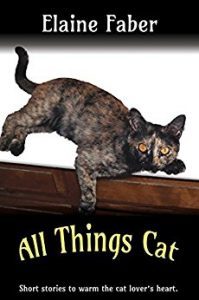 My book of short stories, All Things Cat, includes 21 short stories, all related in some way to a cat. I’ve incorporated both past and present times, unusual locations, situations and circumstances. Some stories are self-narrated BY the cat. Some are stories from my personal experiences, but most are fiction based on ideas taken from holidays, story prompts, contest submissions, and even a couple excerpted scenes from my own novels. I’ve introduced witches, poker players, burglars, and members of the First Family, to name but a few. I’ve tried to incorporate all the aspects of a good short story into each tale.
My book of short stories, All Things Cat, includes 21 short stories, all related in some way to a cat. I’ve incorporated both past and present times, unusual locations, situations and circumstances. Some stories are self-narrated BY the cat. Some are stories from my personal experiences, but most are fiction based on ideas taken from holidays, story prompts, contest submissions, and even a couple excerpted scenes from my own novels. I’ve introduced witches, poker players, burglars, and members of the First Family, to name but a few. I’ve tried to incorporate all the aspects of a good short story into each tale.
When an author of full-length novels publishes a short story, we demonstration our storytelling abilities, style, and writing skills. Like tasting samples at the grocery store, in hopes the customer will buy the product, with a short story, the author hopes to encourage the reader to travel on another journey with the characters we create in our full-length novels. My main goal is to share my make-believe world, and bring a bit of fun and laughter into the reader’s life. Hope you’ll travel this journey with me in All Things Cat or any of my other novels.
All Things Cat is available on Amazon for $2.99. http://tinyurl.com/y7xs4wr5. What a fun book for the cat lover or as a gift for the cat lover in your life.
http://tinyurl.com/lrvevgm Black Cat’s Legacy
http://tinyurl.com/lg7yvgq Black Cat and the Lethal Lawyer
http://tinyurl.com/07zcsm2 Black Cat and the Accidental Angel
http://tinyrul.com/hdbvzsv Mrs. Odboddy – Hometown Patriot
http://tinyurl.com/jn5bzwb Mrs. Odboddy– Undercover Courier
Please leave a comment. Thanks.
February 9, 2018
I’ve Got an Idea – Now What?
Today’s guest blogger is John Lindermuth, author of sixteen novels, including eight in the Sticks Hetrick series. John is a retired newspaper editor who now serves as librarian for the county historical society, assisting patrons with genealogy and research. He is a member of the International Thriller Writers and past vice-president of the Short Mystery Fiction Society. Here’s his take on writing a book.
including eight in the Sticks Hetrick series. John is a retired newspaper editor who now serves as librarian for the county historical society, assisting patrons with genealogy and research. He is a member of the International Thriller Writers and past vice-president of the Short Mystery Fiction Society. Here’s his take on writing a book.
One of the most common questions a writer hears is, “Where do you get your ideas?” It’s an easy one to answer–ideas are all around us.
You discover them in your reading, in what you hear (writers are notorious eavesdroppers), in what you see, and so many other places. But an idea isn’t a story. An idea is simply the germ of a story. It’s what starts you asking, “what if…”
The next step in the process is creating character(s), a plot and a story location. There’s been much debate over which is more important–character or plot. In my opinion, they’re of equal importance. You can’t have one without the other.
Speaking of the former, you want your main characters to have substance and not be paper cutouts. Readers relate to a realistically portrayed character.
So, how do you imbue them with “life?” You give them a personality. You build them from the ground up, with a past and present life, distinguishing characteristics–personality, in other words. But, by no means, do you just dump a block of description and narrative and say this is Joe Smith. You introduce the character bit by bit as you build your story, introducing your character gradually to the reader in the same manner as we learn about people we meet in real life. You don’t learn the entire life history of a person you’ve met in one encounter. Why should it be any different in fiction?
Now, as to plot, this is how it all plays out together. You introduce the crime or crimes, the detective, the investigation, discovery of motive and, eventually, the identity of the culprit. Most thrillers identity the criminal at the outset. In a mystery, I feel that takes the fun out of the story. Most mystery readers like to try and determine the criminal before it’s disclosed by the writer. Traditionally, mysteries started as this type of puzzle, providing clues throughout the narrative to lead the reader to the conclusion. Being the sneaky people we are, writers like to throw in red herrings (misleading clues) to throw readers off the track and add subplots to add more sauce to the story.
This is how an idea becomes a story.
And here is John’s latest Sticks Hetrick novel, In Silence Sealed.
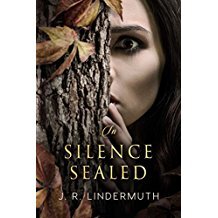 Lydia, daughter of Swatara Creek Police Chief Aaron Brubaker, is accused of murdering her boyfriend Jason Russell, handsome but feckless stepson of Clay Stoneroad, a famous writer who recently moved to a farm outside town.
Lydia, daughter of Swatara Creek Police Chief Aaron Brubaker, is accused of murdering her boyfriend Jason Russell, handsome but feckless stepson of Clay Stoneroad, a famous writer who recently moved to a farm outside town.
Daniel ‘Sticks’ Hetrick, now a county detective, is determined to prove Lydia’s innocence. His job is made more difficult when the weapon her father insisted she carry is found missing.
Mysteries surround the Stoneroad family. Vickie Walker, a strange young woman also recently arrived in town, insists Nan Calder, the writer’s secretary, is her sister, a claim Calder denies. Then Diana Wozniak, reporter for a sleazy tabloid, is the victim of a hit-and-run accident and police learn she attempted to blackmail the writer.
The sudden disappearance of Lydia and Vickie puts Hetrick and his friends in a desperate race against time to find them, unravel secrets and apprehend the real killer.
John’s website is at http://www.jrlindermuth.net
And leave a comment. Where do your ideas come from? Do you start with character or plot? We’d love to hear from you.
February 4, 2018
What’s Behind the Story
Today, Howard Petote gives us a look behind the scenes – a look at what went into his new novel The Sins of Maggie Black on Amazon now, and ready to be officially released on February 14, 2018. Take a look at what went into the story and what he hoped to convey. Interesting.
Origins: An Irish Girl Named Maggie
In 1968 the state of Missouri was blessed with the arrival of a baby girl, a one-year-old lifted from the arms of nuns in the west of Ireland. Her name was Maggie, and her adoptive parents— strict Catholics—wanted her to be perfect. But Maggie Black was not perfect, she was merely human—an earthy, feral child who one day realized she would never earn their love. Drifting into drugs, con artists and petty crime, she becomes a single mother stuck in the gritty world of door-to-door sales—dangerously tied to a bad man.
One muggy evening—while home in Saint Joe preparing for a sales jump—she endures an incident that changes her life. This incident opens my novel, The Sins of Maggie Black, the story of one young woman’s attempt to escape her past and dream of a better life. As she informs her little boy, “From now on it’s gonna be me and you—we’re gonna be a team.” Her journey will pit a fierce determination to succeed against a battered ego, a heart struggling to accept love and companionship, and a past that threatens everything.
I began this post with some backstory to introduce one theme of my novel—the mysterious and profound nature of origins. Starting with the fragile innocence of youth, we bear both the blessings and sins of the world throughout our lives. Origins can also refer to any turning point in a character’s life, such as the incident that opens my story. Maggie doesn’t dwell much on the circumstances of her birth or upbringing, but they have deeply affected her. Though she doesn’t seek her mother, she does possess a vestigial memory of her, expressed as an attraction to water. In a vision that turns prophetic, Maggie sinks deep into a river—a symbolic return to the womb.
The river also serves as a metaphor for a fundamental aspect of nature—the surface and what lies below. The surface is what we can “see” with our basic senses, while what lies beneath is the nearly inexpressible, underlying reality—the murky depths from which everything originates.
I once read a book about men’s issues—more specifically, fathers and sons in modern and primitive societies. I didn’t particularly connect with all the metaphorical language (the author was a poet) but it was very intriguing. I was living in a boarding house the night I finished the book—alone in a room without a TV or phone. That night I had seven vivid dreams, nearly all about myself and my father. They were rich in symbolic meaning. What had happened? How had mere words triggered such startling dreams?
For me, writing is an exploration—an attempt to understand, to feel, to connect with others. That night in my room a connection was made—the personal stories and myths expressed by that author triggered things deep inside me, obviously important issues lurking in the unconscious mind. These issues flow powerfully below the surface in all of us, manifesting themselves in who we are and how we behave. Just as a river follows the truest way downstream, our souls seek a path toward harmony and peace. Though Maggie and the other characters in my novel are highly flawed, they share a fierce determination to heal themselves, to become whole.
I hope I’ve dramatized a compelling story, and if lucky, revealed a few things that lie below. In my next post I’ll discuss the inspiration for this novel from a brief occurrence in Deadwood, South Dakota—and why my heroine is a door-to-door saleswoman.
Find Howard Petote’s novel, The Sins of Maggie Black at Amazon. Paperback and ebook available by February 14. See his website/blog at www.howardpetote.com
January 15, 2018
A Pat on the Back
For newbie writers and those struggling to get traction in the publishing world, encouragement is their most important writing vitamin. The Northeast Texas Writers Organization (NETWO) has for the last few years published a document at the end of each year celebrating the writing accomplishments of many of its members.
The document is for members and friends. It is not published on Amazon or Facebook. It is reproduced and distributed (of course free of charge) to those involved with the Northeast Texas Writing Organization and others.
 So, just what does this cover? It highlights all accomplishments related to writing. It does not require a published book for entry. One can accomplish many things writing-related without actually publishing a book.
So, just what does this cover? It highlights all accomplishments related to writing. It does not require a published book for entry. One can accomplish many things writing-related without actually publishing a book.
We celebrate those who participated in the National Novel Writing Month (NaNoWriMo). Those who finished get a certificate from the NaNoWriMo organization. But even those who did not finish the 50,000 words deserve notice for participating. They were working on their craft of writing and deserve some recognition.
Of course, those who have published a book during the year get a shout out. We’ll include an image of the cover of their book and perhaps a short blurb on it.
But even those who finished a book during the year, even if it has not been published yet, get recognition. It is an accomplishment to complete a book, one that should not go unnoticed.
Anyone who has received an award for their writing should have it noted in our Jubilee for the year. And NETWO consistently has a number of members who have received writing awards each year.
This booklet covers all types of writing, not simply books. Short stories get mentioned And there are always NETWO members who have one award or another for short stories. This past year, one member had four short stories receive awards in contests.
Newspaper articles deserve a mention. It is our intention to remember all writing accomplishments during the year: fiction, non-fiction, printed books, e-books, picture books, coloring books, articles, short stories, newsletters, etc.. We are writers. NETWO is dedicated to supporting all things literary.
The annual Jubilee gives recognition to many of the NETWO members who have participated in the writing community. Congratulations to one and all. We applaud what they have done and say to each,”Congratulations. You are a writer to be noticed.”

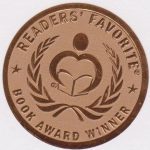

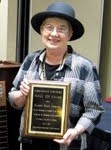
January 5, 2018
Petty Cash
Today, we have an excerpt from Petty Cash, a contemporary  suspense from Leeann Betts (a writing persona for Donna Schlachter, who writes historical suspense). This is book 7 in By the Numbers series.
suspense from Leeann Betts (a writing persona for Donna Schlachter, who writes historical suspense). This is book 7 in By the Numbers series.
Chapter 1
“Ooh, some days I could just kill that man!”
Carly Turnquist, forensic accountant by day and wife, step-mother, and grandmother all the time, sighed and closed the computer file she’d been reviewing when Denise’s call came in. “Calm down, and tell me what’s going on.”
A long quiet filled the line—well, not exactly quiet, given the voices intruding in the background—from Denise’s end of the call. Don, her husband and Mike and Carly’s son-in-law, asked about a clean shirt. Margie, eight going on twenty-eight, nattered on at her younger brother Toby about not drawing on the walls.
Several gulping breaths, reminding Carly of a drowning goldfish, filtered through before Denise continued, her voice a notch lower than before. “Don’s partner. Maurice, but everybody calls him Mo.”
“Don is nearby, right?”
 “Right. And I don’t want him to know I’ve been talking about Mo.”
“Right. And I don’t want him to know I’ve been talking about Mo.”
“Why ever not?” Carly closed the cover on her laptop. If she didn’t, she’d think about all the work that needed doing and not concentrate on Denise’s call. Which would merely lengthen the conversation. “Is it a secret?”
“No, not exactly, but Don doesn’t want gossip to start. You know how it is in a small town.”
Carly resisted the urge to snort. Although married to a native for eleven years, the residents of Bear Cove, Maine, a tiny hamlet of less than four hundred souls at the height of lobster season, still didn’t think of her as “one of them”. “Understood. But it’s unlikely I’ll ever sit around and chat with folks from Riverdale.”
“True. But they do go outside the town limits occasionally, and since they don’t wear signage indicating where they live, you just might bump into one of them.”
Carly chuckled. Denise ran into much the same attitude about the fact she’d swooped in and stolen one of Riverdale’s most eligible bachelors, although the residents did at least treat her better than out-of-towners, as they called anybody not from Riverdale.
Unlike Bear Cove, whose town motto—if they had one—would be: if you don’t live here, go away.
“So what can you tell me? Other than you have homicidal thoughts about the man.”
“He has been so unreasonable lately.”
“Maybe he’s under a lot of stress.”
Now Denise did snort. “Stress? Why do you think people become dentists instead of medical doctors? No emergency calls. No late night outings. Closed on weekends. Four weeks of vacation every year.”
“Point taken. So if not stress, what?”
“I think he’s always been this way, and we’re just beginning to notice.”
“Unlikely but possible.” Carly chewed on the end of a pencil, wishing she’d brought in a granola bar and soda on her last trip to the kitchen. “What are you going to do about him?”
“Can’t do much, can I? He’s Don’s partner, not mine.”
“How has he been acting?”
“Coming in late. Leaving early.”
“Maybe he has a girlfriend.”
“The last time he asked a woman out on a date, he talked about it for a week before and two weeks after. But he never got up the nerve to ask her out again, so that was the end of that.”
Carly pulled open a desk drawer. Maybe she’d left a candy bar or a package of crackers. Nothing. She sat back in her chair. “Okay, so not a woman. What else?”
“He got angry at a patient last week for being three minutes late to her appointment. Her car wouldn’t start and she had to call a tow truck. She called the office, and the receptionist assured her she was fine. But he tore a strip up one side of her and down the other when she came in. Threatened not to treat her and to charge her for a missed appointment.”
“That does seem overboard.”
“And after he spent fifteen minutes haranguing her in the waiting room, in front of other patients, he finally agreed to see her.”
“Okay, so he had one bad day. What else?”
“Don says one minute he’s smiling and jovial, the next he’s sullen and moody. He said it’s like walking on eggshells around the office. And he’s taken to wearing these old red rubber boots everywhere. I saw him in the grocery store last week and commented on them. He looked down at his feet as though he didn’t know what I was talking about. And now Don said he wore them in the office and refused to change into his regular shoes. Said he left them home. But Don saw them under his desk.”
“I expect your hubby is bringing this stress home, and so now you’re unofficially involved. Well, has Don asked Mo what’s going on?”
“Sure. And Mo says everything is fine. Not to worry. Or he turns it back on Don and accuses him of meddling in his private life.”
“Could he be on drugs?”
“Don isn’t sure. But get this. This is the strangest thing of all.”
Carly leaned in as though Denise were in the room with her. “What?”
“Yesterday, Mo asked Don to meet him for coffee. Don went. In fact, he was fifteen minutes early. But Mo was walking out of the coffee shop, red in the face, angry. The veins in his forehead were bulging, Don said.”
“Maybe Don got the time wrong.”
“He thought so too, but as he walked in, he checked the text Mo sent him. He was early.”
“Maybe Mo’s fingers were faster than his brain that day. Happens to me all the time.”
Denise sighed. “Mo admitted Don was early. But he said he was done sitting around and waiting for Don to grow up and take responsibility. Implied he’d been carrying the practice all these years, and Don did nothing to bring in patients.”
“Well, Don and you and I know that’s not true.”
“Don tried to get him to sit down and talk like adults, but Mo took offense to that. He shoved Don aside and said he never wanted to see him again.”
Carly exhaled. That was one thing she liked about working alone—no partners or employees to deal with. “Sounds like Mo wants out of the partnership.”
“Sounds like it.”
“I’m sorry to hear about your troubles.”
“You’d think that was the end of it, but it isn’t. Today Mo texted Don and said he was sorry and wanted to see if they could patch things up between them. Invited us and our guests to spend a week on the Cape at his summer home. Said he has a six-bedroom house, and we can fill up five of them.”
“I’d take that as an apology and jump at the chance.”
“So we asked Tom and Sarah to join us, and to bring Bradley so he could spend time with our two. And we wanted you and Dad to come, too. I’d feel better if we had several calm males there in case Mo gets weird again. Please say you’ll come.”
Carly opened the joint calendar she and computer programmer husband Mike kept and scanned the days ahead. “When do you leave?”
“Tomorrow.”
“Wow, that’s not much notice.” She ran a finger along the week. “But our schedule looks pretty open for the next few days. I have to be back to testify in a big court case on the day after Labor Day, though.”
“Yeah, the kids start school that day, too, and Don has to be back to work, too. Tom and Sarah will also leave on Monday. I’m hoping we can at least have a party or picnic to celebrate the end of summer before we all scatter to the four winds.”
“Then we have a plan.”
“Great. Tom and Sarah are driving down today. They’ll stay here overnight, and we can connect with you at that restaurant on the highway in Augusta around ten. The kids will be ready for a bathroom break by then, and I’ll be glad for a coffee.”
“We’ll be there. Looking forward to seeing everybody. It’s been a while since we did anything together.”
Carly hung up and opened the cover of her computer. Mike would be home soon, and hopefully he’d be excited to hear about their impromptu vacation. Surely he wouldn’t blame her for looking for a mystery where none existed.
After all, this wasn’t her idea.
So if they found a mystery, it couldn’t be her fault.
End of excerpt
Leeann’s website is : www.LeeannBetts.com Receive a free ebook just for signing up for our quarterly newsletter.
Blog: www.AllBettsAreOff.wordpress.com
Books: Amazon http://amzn.to/2dHfgCE and Smashwords: http://bit.ly/2z5ecP8
December 22, 2017
Mystery from Down Under
Today, Peter Mulraney from Adelaide, South Australia, tell us about  some of his writing. In addition to authoring a series of novellas, Peter is a modern-day mystic. He intends for his books to be read in one sitting, perhaps two hours. Today, he tells us a bit about his Stella Bruno Investigates – the series of short books.
some of his writing. In addition to authoring a series of novellas, Peter is a modern-day mystic. He intends for his books to be read in one sitting, perhaps two hours. Today, he tells us a bit about his Stella Bruno Investigates – the series of short books.
Stella Bruno Investigates is a series of quick reads – books designed to be read in one sitting. Each book in the series only takes around an hour and a half to two hours to read. So, there’s no waiting for days to find out who did it.
The series is set in and around Adelaide, South Australia, and centres on criminal investigations led by Detective Sergeant Stella Bruno. I have the inside information on Adelaide – it’s my home town.
Stella is assisted by Detective Constable Brian Rhodes, who’s approaching retirement, harassed by Detective Inspector Frank Williams, and distracted by Shaun Porter from the Office of the Director of Public Prosecutions.
In addition to all the crime, the stories also follow Stella’s developing relationship with Shaun and provide insights into her life as a single mother with a fourteen-year old son. You’ll also discover some of the benefits she enjoys by being part of an extended Italian family.
If you’ve never been to Australia, these stories will give you a little taste of life ‘down under’ where you can experience the North Wind as hot and blustery and winters without snow and ice.
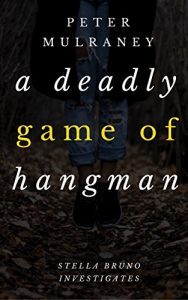 A Deadly Game of Hangman, Book 4 in the series, tells the story of Stella’s investigation into the murder of a young man whose body is found hanging from a tree in Adelaide’s famous Park Lands, which ring the city centre. The killer tried to disguise the murder as a suicide but there are some things about a hanging that you just can’t hide from a forensic pathologist, like Dr Steve Wright.
A Deadly Game of Hangman, Book 4 in the series, tells the story of Stella’s investigation into the murder of a young man whose body is found hanging from a tree in Adelaide’s famous Park Lands, which ring the city centre. The killer tried to disguise the murder as a suicide but there are some things about a hanging that you just can’t hide from a forensic pathologist, like Dr Steve Wright.
The case gets a little more interesting when the body of a friend of the first victim is found hanging from a tree in Morialta Park, in the foothills on the eastern edge of the Adelaide metropolitan area, and the similarities strongly suggest to Stella that she is dealing with a serial killer.
And, just to keep you up until you’ve finished, I’ve built in a little bit of suspense towards the end.
The other titles in the series published to date are:
The Identity Thief.
A Gun of Many Parts.
Bones in the Forest.
A Deadly Game of Hangman is available from Amazon at: http://getbook.at/stellabruno4
My website: https://petermulraney.org
Leave a comment on how you feel about very short books, such as these. A great idea? thanks.
December 8, 2017
Real Life Spawns a Book
Author Frankie Capers has four children, ten grandchildren,  and eleven great-grandchildren. It’s probably the great grandchildren that provide her with many of her stories. Frankie, besides poetry, writes children’s Story-Coloring books. The child can color the story as the story is read. Frankie feels this will help the children develop a love of reading. Here’s how one such book came about.
and eleven great-grandchildren. It’s probably the great grandchildren that provide her with many of her stories. Frankie, besides poetry, writes children’s Story-Coloring books. The child can color the story as the story is read. Frankie feels this will help the children develop a love of reading. Here’s how one such book came about.
There are not many things as devastating as retiring and having your income cut in half. I found myself at a crossroads in my life when TrailBlazer, a subsidiary of Blue Cross Blue Shield Medicare, lost their bid in November of 2011, and I had to retire and relocate. Where would I live? It was certain I could no longer afford to stay in my apartment in Dallas.
After searching, I bought a cozy cottage home, nestled among hundreds of tall pine trees near the beautiful Lake Cypress Springs in east Texas. It didn’t take long for me to realize I was not alone. I shared my acreage with many forest animals, including the red fox, rooting armadillos, curious raccoons, gray squirrels and herds of deer.
The hooting of the owls at evening brought back many memories of childhood. And nothing was more relaxing than the singing of the bright red cardinals every morning as I enjoyed coffee on my front porch. It would seem the brave deer knew they were protected from hunters in our gated community when they roamed among the Dogwood and Crape Myrtle trees. I took many pictures of them when I first moved to my country home. They would come within ten feet of my front porch to enjoy the fresh new grass of spring. Only doe and fawns could be seen. Most of the time bucks stayed hidden.
One Saturday afternoon a doe stood just inches from my porch with her head down. I opened the door and in a flash she dashed across my driveway, bounding toward the woods. At that moment I glanced down and couldn’t believe my eyes. In my flowerbed, almost hidden by monkey grass, lay a newborn fawn covered with tiny white spots. Its shoulders were still tucked beneath its helpless body.
I didn’t touch it, but watched it all day, taking pictures as it finally stood and gained strength in its legs. The heat from the May sun forced the fawn to walk upon my flat concrete porch and curl up in the shade. It stayed there and didn’t move an inch for six hours. At dusk when I checked again it wasn’t there. With care, I stepped out onto the porch and waited for my eyes to adjust to the twilight. In the middle of the lawn, the mother urged her fawn along, as she licked and fed it until they disappeared into the darkness. In the weeks and months to come, I took more pictures of them as they returned with friends to graze on my lawn.
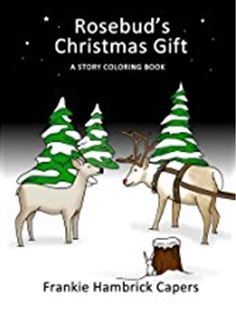 One morning in early December, as I sat by my window enjoying the new fallen snow, a few deer walked past. One stopped and looked at me. I started to think about the little fawn I had babysat that day in May, and from that came my latest children’s story-coloring book, “Rosebud’s Christmas Gift”. Deer love to eat roses, so to keep one rose around, the fawn was named Rosebud. She grew to be a beautiful doe. Christmas was approaching soon and on Christmas Eve she received a wonderful gift she would always remember.
One morning in early December, as I sat by my window enjoying the new fallen snow, a few deer walked past. One stopped and looked at me. I started to think about the little fawn I had babysat that day in May, and from that came my latest children’s story-coloring book, “Rosebud’s Christmas Gift”. Deer love to eat roses, so to keep one rose around, the fawn was named Rosebud. She grew to be a beautiful doe. Christmas was approaching soon and on Christmas Eve she received a wonderful gift she would always remember.
Your children or young friends and neighbors will love discovering Rosebud’s gift as they read about her and color the pages at the same time.
“Rosebud’s Christmas Gift”, released in 2017
One spring a fawn was born in a flowerbed. Deer eat all the roses, so to keep one rose around she was named Rosebud. Her mother left her there, but returned for her at dusk. She grew to be a beautiful doe. The following Christmas Eve, she received a gift she would always remember.
You can get more details, and purchase the book at: https://tinyurl.com/ya69nv3l
And please leave your comment on how some event sparked your book.
December 1, 2017
What Role does Location Play?
Today’s post is from Leeann Betts. She writes contemporary  suspense, while her real-life persona, Donna Schlachter, pens historical suspense. She has released six titles in her cozy mystery series, By the Numbers, with Petty Cash releasing in December. Here, she talks about what the role of location is in her books.
suspense, while her real-life persona, Donna Schlachter, pens historical suspense. She has released six titles in her cozy mystery series, By the Numbers, with Petty Cash releasing in December. Here, she talks about what the role of location is in her books.
Choosing a Setting, By Leeann Betts
With so many great places to set a book, how do authors go about selecting that perfect location that is not merely a backdrop to the plot but actually becomes an integral character?
For me, I go about this two ways: I either know the story and choose the setting based on what’s going to happen in the story, or I know the location and want to set a good story there.
For example, in my recent Christmas-themed book, In Search of Christmas Past, I decided it was time to set a book in Colorado. I love the mountains, and it seemed like the perfect place for a scavenger hunt, providing opportunities for slippery roads, trekking through snow, and falling through the ice.
In No Accounting for Murder, since I’m familiar with small East Coast towns (I lived in Newfoundland and Nova Scotia before emigrating to the US), and because the culture in a small East Coast town is completely different than a city, I knew I wanted to set a story in such a place. That culture not only defines what happens in the story, it also defines the characters. However, when it came to the setting for the next book, There was a Crooked Man, this was borne because my pastor was contemplating buying a property in New Mexico and turning it into a retreat center for pastors.
I wanted to give this series the feel of the “Murder, She Wrote” television series, so each setting for my books has been based on a place I’ve visited. I like to make up my actual locations, however, so I can orchestrate the streets, move buildings, and include details not present in the actual location.
Please leave a comment about connections you have with particular settings, whether in books you’ve written or books you’ve read.
 About In Search of Christmas Past:
About In Search of Christmas Past:
Grace Bellows, a senior in college, receives a Christmas card one month after her grandmother’s death, where her beloved Grammie challenges her to an old-fashioned scavenger hunt. Raised by her grandmother after her parents’ death in a car accident when she was eight, Grace has lived a jet setter lifestyle with her wealthy grandmother. Now all she wants is to settle down and have a normal life.
Luke Fisher manages his family’s Christmas tree farm out of a sense of loyalty to his deceased mother because she gave up her dreams of being an attorney. He doesn’t want to live with any regrets, and longs to escape the confines of loyalty to live a life of adventure in the real world.
Can Grace and Luke solve the clues and uncover the truth about their real feelings, or will the tension and their differences in goals and faith drive them apart?
Leeann publishes a free quarterly newsletter that includes a book review and articles on writing. Subscribe at www.LeeannBetts.com
You can follow Leeann at http://www.AllBettsAreOff.wordpress.com
Find her books on Amazon at: http://amzn.to/2dHfgCE
November 24, 2017
3 Essential Tips to Great Marketing
Today’s guest is Patty Wiseman, a native of Seattle, Washington, who now makes her home in east Texas with her husband and a Creme lab, Cutter. She writes stories of intrigue with a touch of romance. She likes to feature strong women who overcome difficult obstacles. And in August 2017 her first children’s book, Rescue at Wiseman’s Pond hit the stands. She has six books published with more in the pipeline. But, of interest to us today is the fact that Patty is becoming an expert on marketing.
who now makes her home in east Texas with her husband and a Creme lab, Cutter. She writes stories of intrigue with a touch of romance. She likes to feature strong women who overcome difficult obstacles. And in August 2017 her first children’s book, Rescue at Wiseman’s Pond hit the stands. She has six books published with more in the pipeline. But, of interest to us today is the fact that Patty is becoming an expert on marketing.
“People don’t buy what you do. They buy why you do it.” Simon Sinek
Selling my first 1,000 books wasn’t easy. The path, littered with misinformation, sharks out to get your money, and an ocean of webinars and online writing classes, nearly discouraged me to the point of giving up writing for basket weaving. The mind-numbing onslaught of social media information almost took me out.
But, I couldn’t quit. I bleed ink. Storytelling is in my blood. So, what to do? How do I get my book to stand out among the millions out there?
Yes, the biggest elephant in the room is marketing. So here is what I did.
Confidence, not bravado builds trust.
Wading through the odorous landfill of articles on how to market your book really discouraged me, but one point finally began to shine through. A common thread – show confidence. Your story is one of a kind, yes, but even more unique is YOU! You must be one hundred percent invested in yourself. Stand before your audience with pride and self-assurance. You know what it took to write that book, so own it! You can’t expect people to believe in your story if you don’t believe in yourself.
Stop selling your book!
One of my biggest pet peeves is watching authors stand before their audience and tell the story they’ve written in the book. Why do you do it?! You risk people turning away because you just told them the whole story. Why would they buy the book? Taglines, keywords, a quick anecdote, yes, but NOT the story! Instead, sell yourself. YOU are the brand. You’ve heard this before, but do you really understand what it means? People come to see authors because they are interested in you. I am always asked the question, “How did you get started?”
I believe there is an inbred need for humans to tell stories. The ancients passed down information by telling and retelling stories. When people come to see you, they have a deep desire to find out how to write their own stories. Sell yourself. Get people interested in you. Offer them a glimpse of your world. The book is secondary.
Don’t pump your book on social media except when you have a new release or an award. Create a personality on your social sites that people are drawn to. Readers interact with humans, not brands, so make yourself the brand.
Get famous in your hometown.
There is no better place to get your feet wet in building your brand than in your hometown. You can’t expect people to be drawn to you on the impersonal world wide web if the folks in your own town don’t know who you are. Find places to have book signings. Offer your services as a speaker to local organizations to get your name out there. Speak on different writing topics, not your book. Branch out to nearby communities. Look for ways to get interviews on the radio, television or your local newspaper. Offer to be part of a fundraiser in your town. Donate a book to a good cause that is widely advertised. Make your footprint where you live.
Here is a good site to study. https://www.iuniverse.com/Resources/Book-Marketing-Self-Promotion/10TipsForMarketingYourBook.aspx
Marketing is hard. Why make it more difficult. You are the author. Sell you. No one knows you better than you do. Find out your strengths and lean on them. Promote them. Get out and meet your public. Go to festivals and other events in town. You’ll be surprised how soon you will become noticed and recognized.
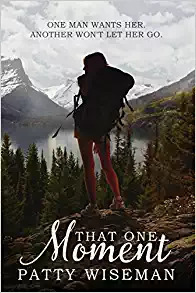
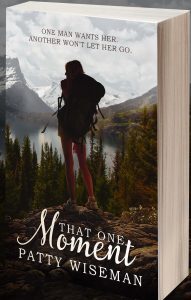 Happy marketing!
Happy marketing!
Here’s a blurb on Patty’s latest book, That One Moment.
Ricki Sheridan traveled a long way to seek refuge at Wolf Den’s Lodge high in the mountains after a devastating betrayal. Heartbroken, she signed up for a survivalist backpacking trip to live off the land and forget.
An injury on the first day puts her in the capable hands of the handsome trail boss, Kory Littleton. The attraction is instant, mutual, and terrifying. She trusted her emotions once and vowed never to make the same mistake again.
Kory’s heart, trampled and bruised, is unprepared to ever love again, until his unexpected reaction to Ricki reveals some things are worth taking a chance on.
When evil finds its way back into Ricki’s world, their fragile bond is tested, forcing them to face their greatest fear: can a wounded heart ever trust anew?
Betrayal. Desire. Revenge. Which one prevails?
You can find more about this new book at: http://amzn.to/2hirJP5
And if you have something to add on marketing, let’s hear it. Please. Thanks. Jim



